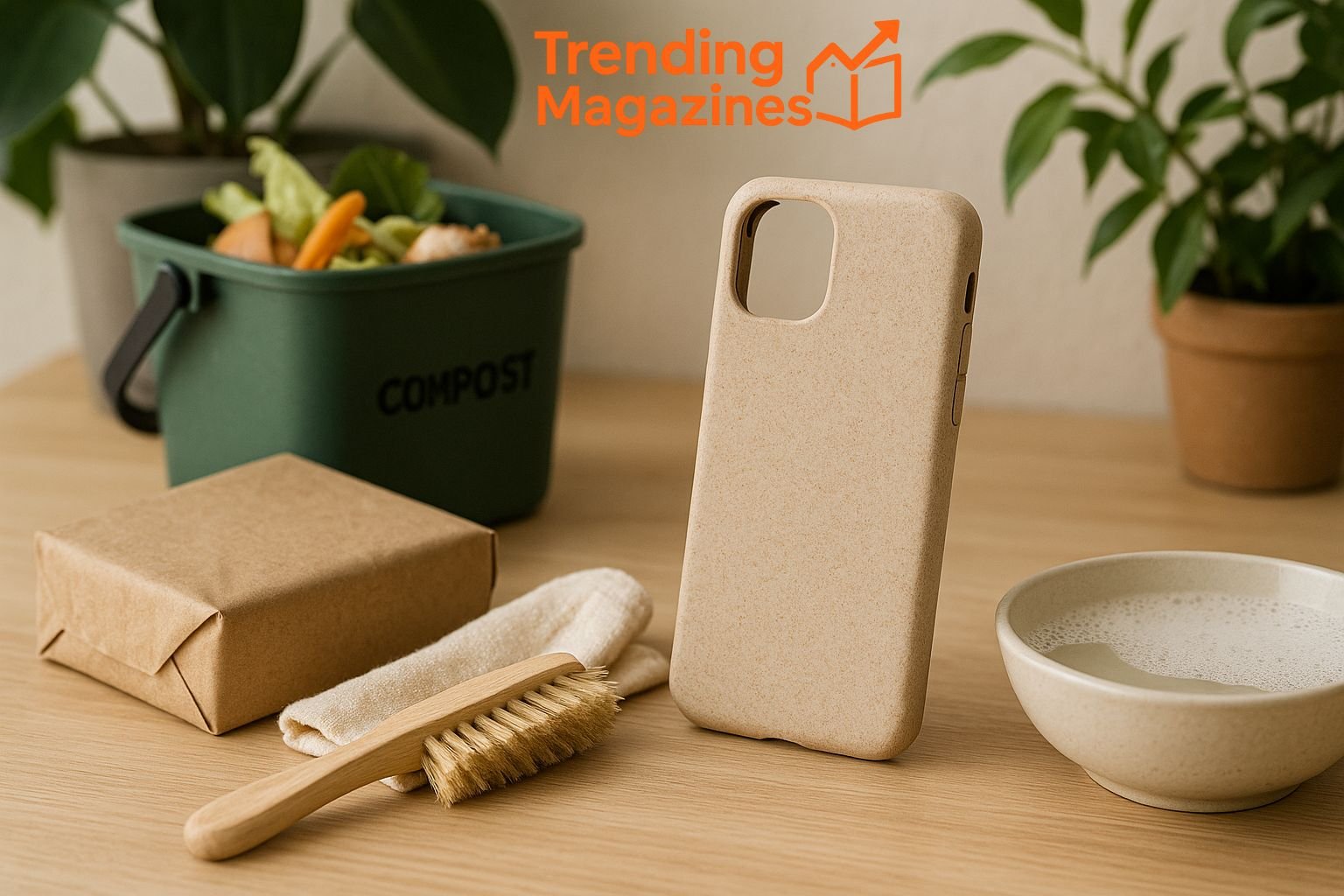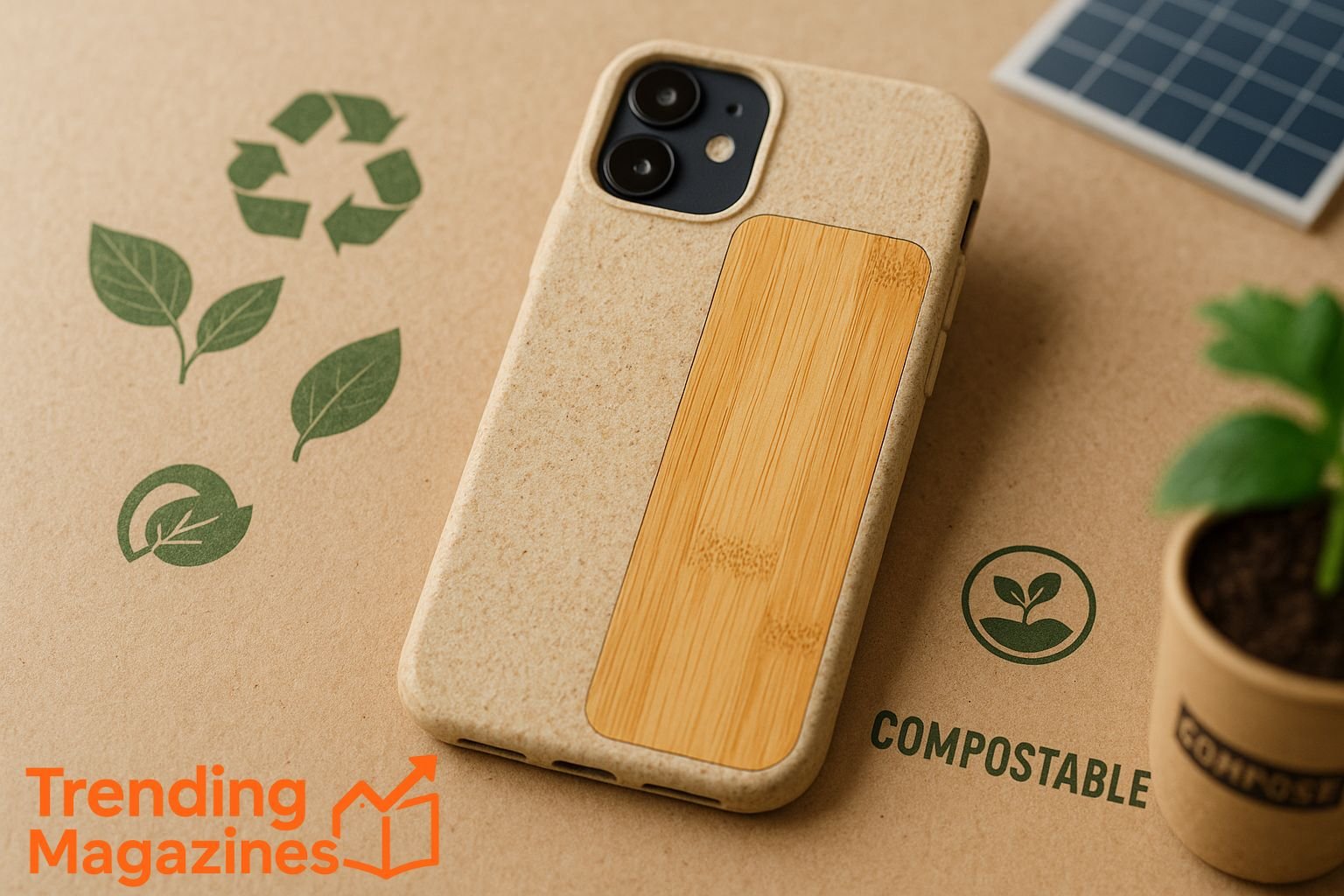Introduction:
Choosing an eco-friendly phone case is just the first step in a sustainable lifestyle. Knowing how to clean and dispose of your biodegradable phone case properly ensures that its environmental benefits are fully realized. This guide provides reliable, instructional insight for users who care about zero-waste products, ethical choices, and correct product lifecycle management.
Table: Quick Overview of Biodegradable Phone Case Care and Disposal
| Action | Instructions/Key Notes |
| Cleaning | Use mild soap and a soft cloth; avoid harsh chemicals |
| Composting | Home compost (if applicable) or check industrial compost facilities |
| Disposing in Trash | Only if no composting or recycling options exist |
| Take-back programs | Check with the brand; many offer collection or return schemes |
| Reuse or donate | Consider passing it on if still durable |
| Avoiding greenwashing | Look for third-party certifications and transparent sourcing info |
Why Sustainable Phone Case Care Matters
A sustainable phone case is more than a marketing label. Most biodegradable materials, such as plant-based bioplastics, are designed to break down safely but only under certain conditions. Incorrect disposal can lead to wasted resources or contamination. By learning how to maintain and dispose of these cases properly, users can avoid contributing to environmental issues like plastic pollution and microplastic waste.
What Are Biodegradable Phone Cases Made Of?
Understanding the materials helps inform how to treat and discard your case. Most biodegradable phone cases are made from:
- Plant-based bioplastics (e.g., corn starch, wheat straw)
- Bamboo fibers or cork
- Recycled materials like recycled ocean plastic
- Non-toxic dyes and minimal packaging with recyclable inserts
These materials degrade over time under specific composting conditions, unlike conventional plastic which can persist for hundreds of years.
How to Clean Your Biodegradable or Compostable Phone Case
Use Mild, Natural Cleaners
Harsh chemicals can weaken renewable materials, making the case less durable. Instead, use:
- A solution of warm water and mild soap
- A soft microfiber cloth
- A small brush for crevices
Avoid bleach, alcohol-based products, or abrasive tools that may degrade the case or release particles.
Drying Tips to Preserve Durability
After cleaning:
- Air dry completely before using again
- Avoid direct sunlight or heat sources
- Do not put in the dryer or near heaters
This method maintains durability and ensures the case retains its form for the remainder of its product lifecycle.
Where and How to Dispose of a Biodegradable Phone Case
Option 1: Home Composting
Only some compostable phone cases are suited for home compost systems. Check your product label for certification like TÜV Austria OK Compost HOME. If suitable:
- Cut the case into smaller pieces to speed up decomposition
- Place in the compost bin along with food waste and yard clippings
- Allow 90–180 days for full breakdown, depending on temperature and materials
Option 2: Industrial Composting Facilities
Most biodegradable phone cases require industrial conditions to break down fully. These include higher temperatures and controlled humidity. Locate a facility nearby by:
- Visiting your local municipality’s waste management website
- Using databases such as FindAComposter.com (U.S. users)
Before sending, confirm if the facility accepts bioplastics.
Option 3: Brand Take-Back Programs
Some ethical phone case companies offer take-back programs or recycling initiatives. Brands using recycled materials or sustainable manufacturing often include return labels or QR codes for drop-off options. This method helps ensure proper end-of-life solutions.
Option 4: Donation or Reuse
If your durable phone case is still in usable condition:
- Donate to a community center or shelter
- Give to a friend or family member with a compatible phone model
- Upcycle into desk stands, pen holders, or art projects
How Long Do Biodegradable Phone Cases Last?
The average biodegradable phone case can last between 12 to 24 months depending on:
- Usage frequency
- Exposure to sunlight and moisture
- Quality of sustainable phone accessories brand
Though they’re built to break down after disposal, high-quality cases are designed to protect phones while in use.
Are All Compostable Cases Truly Compostable?
No. Misleading marketing, or greenwashing, is common in the eco-products market. To avoid it:
- Look for certifications like USDA BioPreferred, BPI Certified Compostable, or OK Compost
- Check for clear information on ethical sourcing and supply chain transparency
- Avoid brands that don’t share specific disposal instructions
How to Differentiate Between Biodegradable and Compostable Cases
| Feature | Biodegradable Phone Case | Compostable Phone Case |
| Breaks down naturally | Yes | Yes |
| Requires composting facility | Not always | Often yes |
| Leaves no toxic residue | Usually | Must meet certification |
| Certified by third-party orgs | Sometimes | Frequently |
Understanding this difference prevents improper disposal and supports ethical manufacturing practices.
Why You Should Avoid Throwing Eco-Friendly Cases in the Trash
Discarding eco-friendly phone cases in landfills can:
- Prevent decomposition due to lack of oxygen
- Cause methane release as organic matter breaks down anaerobically
- Waste valuable biodegradable materials
Use one of the proper disposal methods above to avoid contributing to landfill overflow.
Minimal Packaging and Sustainable Shipping
Many sustainable phone case brands also adopt minimal packaging principles. These often include:
- Recycled paper or cardboard boxes
- Soy-based inks for print
- Water-activated tape instead of plastic sealing
Dispose of this packaging in your home recycling bin or compost pile depending on material type.
Final Thoughts:
Choosing a biodegradable phone case is a smart move toward conscious consumption, but the responsibility doesn’t end at purchase. Cleaning it gently, following certified product lifecycle practices, and opting for trusted ethical phone case companies can ensure your eco-decision makes a genuine difference. By supporting sustainable manufacturing, avoiding greenwashing, and following verified disposal options, users play a direct role in reducing waste and supporting a cleaner planet.
FAQS
How to clean an eco-friendly phone case without damage?
Use soft cloth and mild soap. Avoid alcohol, bleach, or abrasive pads. Rinse with water and dry naturally.
Does a biodegradable phone case really decompose?
Yes, but it depends on the composting environment. Industrial composting is typically more effective than home composting.
Where to recycle old phone cases made from plant-based bioplastics?
Check with the original brand or visit certified composting centers. Some electronics stores also accept accessories for recycling.
What are compostable phone cases made of?
Materials include corn starch, wheat straw, bamboo, recycled paper, and other renewable materials.
Is compostable better than biodegradable?
Compostable items must break down without toxins under composting conditions. Biodegradable is a broader term and less regulated.




